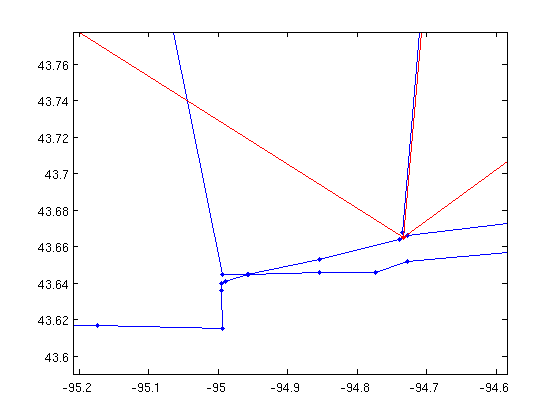

The complexity of graph isomorphism remains a significant open problem. But we don't yet have easily checked isomorphism invariants that are sufficient. We can often show that two graphs are non-isomorphic by noticing a structural difference between them, and then showing that that difference is an isomorphism invariant. 16.2 Geometric Embeddings We typically upper bound 2by evidencing a test vector. You won't be surprised to know that while the number of triangles in a graph is an isomorphism invariant, it is not a sufficient condition for the existence of an isomorphism. The proof will involve almost no calculation, but will use some special properties of planar graphs.However, this proof has been generalized to many planar-like graphs, including the graphs of well-shaped 3d meshes. There is no way of proving that the regions have to be connected in a. in a topological disk, the resulting boundary composed of the cut edges is. and specially the least-perimeter partition of a planar disk into n regions.

Some brief reflections on graph isomorphism point of hope for improved drawings of non-planar graphs is to draw them. Once we've verified that $F$ is bipartite, we know by Theorem 26.7 that $F$ contains no cycles of odd length, and in particular, no triangles. When a planar graph is drawn in this way, it divides the plane into regions called faces. Proof.e may assume that the graph is 3-connected: we can add. Phys.\newcommand \choose 3$ simple facts about $G$. When a connected graph can be drawn without any edges crossing, it is called planar. Lemma 3 In every simple planar map whose edges are 2-colored there are at least two quiet nodes. Koebe, P.: Kontaktprobleme der konformen abbildung. Klemz, B., Nöllenburg, M., Prutkin, R.: Recognizing weighted disk contact graphs. Hliněný, P., Kratochvíl, J.: Representing graphs by disks and balls (a survey of recognition-complexity results). Hliněný, P.: Classes and recognition of curve contact graphs. Click here to get an answer to your question The maximum electric field intensity on the axis of a uniformly charged ring of charge q and radius R. A simple graph is planar i no subgraph is home-omorphic to K5 or to K3 3. Two graphs are homeomorphic if one can be obtained from the other by a sequence of operations, each deleting a degree-2 vertex and merging their two edges into one or doing the inverse. Gonçalves, D., Isenmann, L., Pennarun, C.: Planar graphs as L-intersection or L-contact graphs. In a sense, K5 and K3 3 are the quintessential non-planar graphs. (ed.) Thirty Essays on Geometric Graph Theory, pp. Our main contribution is an approach to design subexponential-time FPT algorithms for problems on disk graphs, which we apply to several well-studied graph problems. CoRR abs/2010.01886 (2020)įelsner, S.: Rectangle and square representations of planar graphs. that generalizes both the classes of planar graphs and unit disk graphs, and thereby unify the aforementioned research frontiers for planar and unit disk graphs.
Planar disk graph proof pdf#
Keywords Minimum bisection problem unit disk graphs planar graphs NP-hardness Download conference paper PDF References Akyildiz, I., Su, W., Sankarasubramaniam, Y., Cayirci, E.: Wireless sensor networks: A survey. CoRR abs/2010.01881 (2020)Ĭleve, J.: Weak unit disk contact representations for graphs without embedding. In this paper we prove that the Min-Bisection problem is NP-hard on unit disk graphs, thus solving a longstanding open question. Ĭhiu, M., Cleve, J., Nöllenburg, M.: Recognizing embedded caterpillars with weak unit disk contact representations is NP-hard. Ĭhaplick, S., Ueckerdt, T.: Planar graphs as VPG-graphs. If G C is connected, then for any embedding of G in S2, the connected set G C is contained in one of the two disks bounded by C. The cycle C is the boundary of a face for every embedding of G in S2 if and only if G C is connected. (97)00014-XĬhalopin, J., Gonçalves, D., Ochem, P.: Planar graphs have 1-string representations. Let G be a planar graph and let C G be a cycle. īreu, H., Kirkpatrick, D.G.: Unit disk graph recognition is NP-hard. īreu, H., Kirkpatrick, D.G.: On the complexity of recognizing intersection and touching graphs of disks. īowen, C., Durocher, S., Löffler, M., Rounds, A., Schulz, A., Tóth, C.D.: Realization of simply connected polygonal linkages and recognition of unit disk contact trees. Bhore, S., Löffler, M., Nickel, S., Nöllenburg, M.: Unit disk representations of embedded trees, outerplanar and multi-legged graphs.


 0 kommentar(er)
0 kommentar(er)
